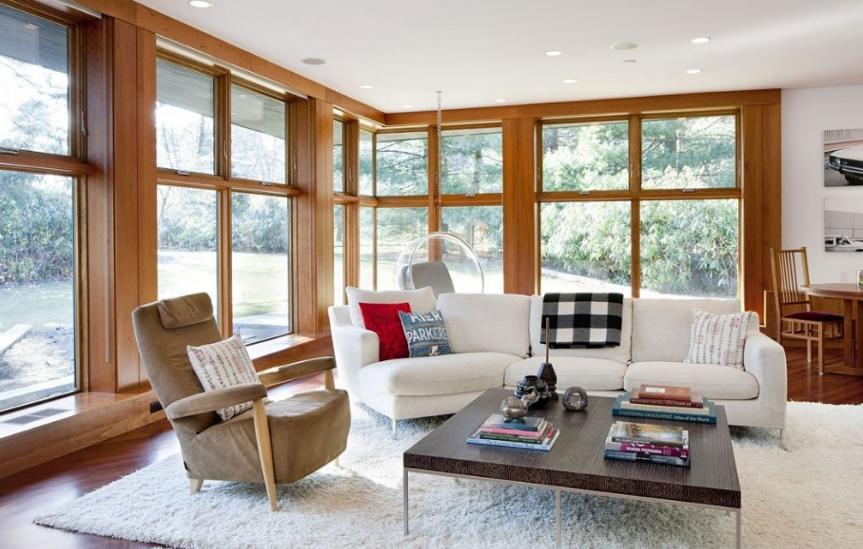What is natural room lighting
Sunlight is not only the source of life for all living creatures on earth, but it is also an important factor for work, rest, etc. To ensure a comfortable environment in your house or apartment you need to take care of the quality of natural light and, if possible, provide it at an optimum level.
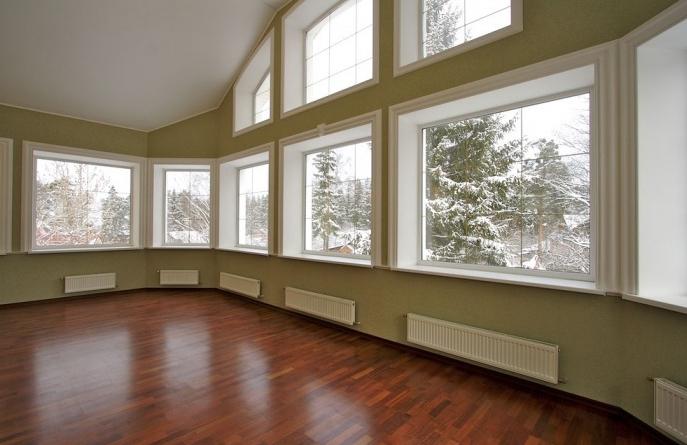
Definition
Natural light is the illumination of the earth's surface by direct solar radiation or diffused light coming from the firmament. It is the most comfortable option during the day, favorable for human vision, so it should be used whenever possible.
Source of natural light - The sun, which emits a powerful stream of light energy. It reaches the surface of the planet as a direct and in the form of scattered radiation. For all types of calculations on natural light for rooms only diffuse (scattered) light is used.
The peculiarity of this indicator is that it does not have a certain value and depends on a number of characteristics:
- Geographic latitude. The closer to the equator - the more the sun falls on the surface and the higher the illumination index.
- Location of the object. If it is near high mountains or in a natural lowland, the values are reduced for natural reasons. Do not forget artificial obstacles - tall buildings nearby or trees with dense crowns.
- Time of year. Depending on the period, illumination varies a lot, as the sun goes lower in the winter season and rises higher in the summer.During the summer, the natural light level is the highest.
- Time of day. Maximum illumination is during the daytime, and it is lower in the morning and evening hours.
- Cloudiness also has a big impact. This factor can act in different ways, it is difficult to predict it accurately. Usually, you should take into account the average level of cloud cover for a particular area.
By the way! Natural light can vary greatly, even over the course of several hours. Therefore, when calculating and choosing options, you should try to use the available light resources to the maximum benefit.
Classification
Types of natural lighting in rooms are divided into 3 main groups. To choose the best solution and make all the necessary calculations, it is necessary to understand the classification. It's simple:
- Side lighting - the most common and simplest option, suitable for all types of buildings, regardless of the number of floors and design features. Light enters through openings in the wall, which come in different sizes and shapes depending on the amount of light needed. This is an easy solution to achieve and allows a normal light penetration, but there can be problems in large rooms with a large distance between window and wall. The problem in this case can be solved by increasing the height of the openings, but this is not always possible.
- Upper variant. The advantage of this system of natural lighting is that with its help you can perfectly light a room of any shape and size. The main thing - to plan the location of openings on the roof and calculate their optimal size. But such systems are only available for single-story buildings, the work on the roof is much more difficult because of the need for sealing. Another disadvantage - greater heat loss in the winter, if there are a lot of openings, as it is difficult to insulate such structures.
- Combined solution combines the top and side options and allows for optimal natural lighting for any building. But to implement such a project is possible only in single-storey buildings or on the upper floors of multi-storey buildings. For all its advantages, it has a big disadvantage - the complexity of design and implementation. Windows for the roof are expensive, and the roofing system is much more difficult to do because of the lack of a ceiling partition - you need to qualitatively insulate the slope.
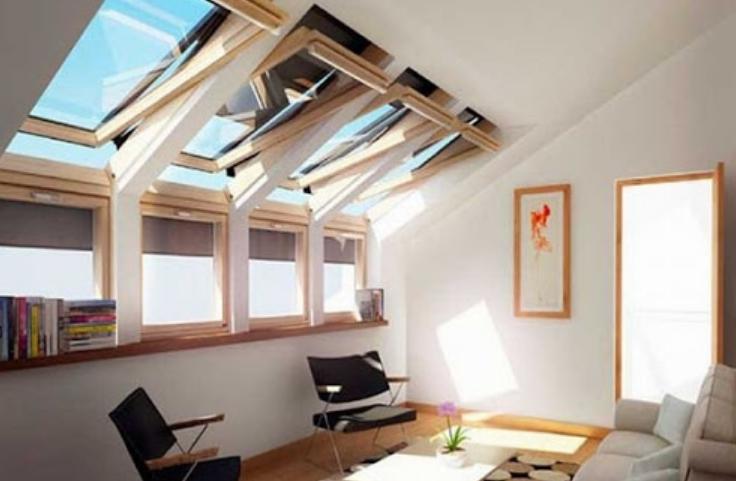
Lighting requirements are different and depend on what the room is for and what work will be done in it.
It should be remembered that the side lighting can be one-sided or two-sided, when the windows are located on adjacent or opposite walls. This significantly affects the illumination.
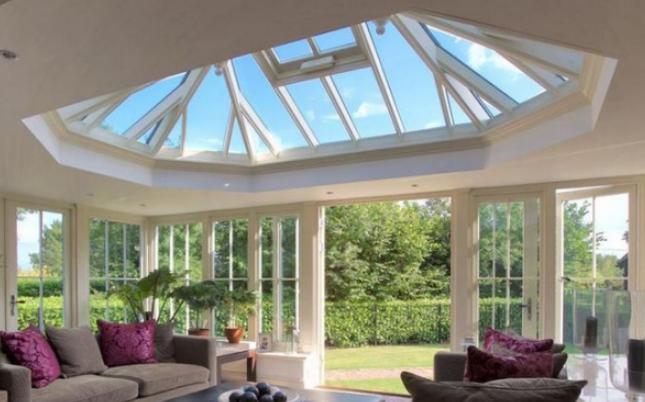
Systems and standards for natural light
As for the choice of system, we must proceed from the situation. Most often use standard windows, as it is easiest and does not need to make complicated calculations. To find out the optimal value for a particular room, use the KEO - coefficient of natural light. You need to consider the following:
- To calculate the coefficient, you need to divide the illumination inside the room by the outdoor index and multiply by 100. The result will be the benchmark in percent.
- There is no point in calculating the CEE on your own, as the work has already been done by specialists of research institutes. In SNiP 23-05-95 there is a table in which the optimal values for all regions. You need to choose your own, to clarify the figure to be guided by.
- The coefficient depends on the region, the more south it is, the luminous flux is brighter and the lower can be the ratio between the room and the street. Russia is divided into 5 zones in which the figures vary from 0.2 to 0.5.
- The classification also distinguishes several groups of rooms, depending on what work will be done. The clearer you need to see everything, the higher the required values will be. But for living rooms, there is not much difference, so you can be guided by the general values, which are in the table below.
Table: Natural Light Coefficients for Living Rooms and Norms for the Use of Artificial Light
| Room of a residential building | IEO under lateral illumination in % | Recommended illumination of working surfaces under artificial lighting, LK |
| Living rooms, bedrooms | 0,5 | 150 |
| Kitchens | 0,5 | 150 |
| Children's | 0,5 | 200 |
| Study rooms | 1 | 300 |
| Corridors | - | 50 |
| Bathrooms, bathrooms | - | 50 |
By the way! If there are large buildings or trees nearby that block the sunlight, you need to take this into account and increase the coefficients based on the situation.
Measuring illumination
Check should be carried out with the help of special devices, this may be a luxmeter or photometer. It is easy to use, it is enough to study a short instruction to understand the work. It is very important to measure correctly:
- For rooms with windows on one side, the test point is the floor at a distance of one meter from the wall opposite the natural light.
- If overhead lighting is used, the indicator should be checked at the center of the room at a height of 1 meter from the floor.
- In apartments with up to 3 rooms the check is carried out in one room. If there are four or more rooms, you must monitor the readings in at least two places.
Only certified instruments should be used so that the readings are accurate. It should be remembered that if the windows are located on the south or east side, the illumination in them is much better, this applies to the northern hemisphere, in the southern hemisphere it is the opposite.
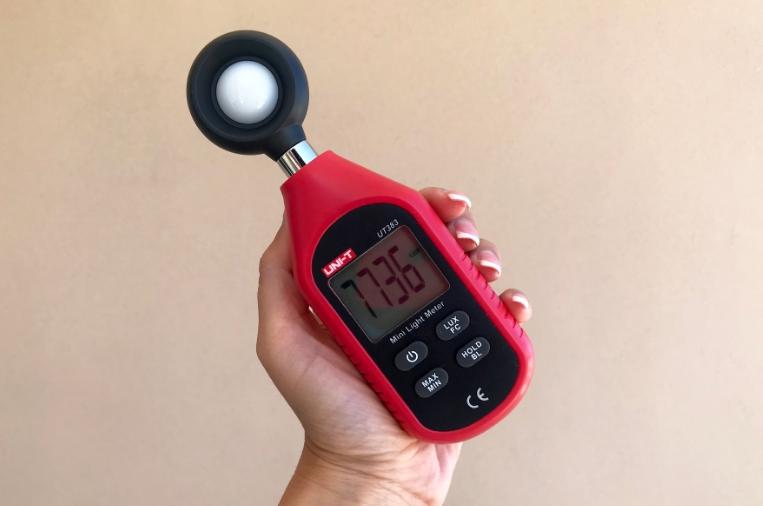
Normal natural light allows you to do household chores without straining your vision and provides optimal conditions. If after checking it turns out that its level is insufficient, you need to use artificial light sources to correct the situation.
